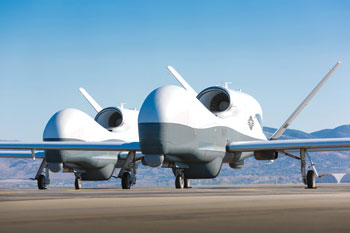INDIAN ARMED FORCES CHIEFS ON OUR RELENTLESS AND FOCUSED PUBLISHING EFFORTS

The insightful articles, inspiring narrations and analytical perspectives presented by the Editorial Team, establish an alluring connect with the reader. My compliments and best wishes to SP Guide Publications.

"Over the past 60 years, the growth of SP Guide Publications has mirrored the rising stature of Indian Navy. Its well-researched and informative magazines on Defence and Aerospace sector have served to shape an educated opinion of our military personnel, policy makers and the public alike. I wish SP's Publication team continued success, fair winds and following seas in all future endeavour!"

Since, its inception in 1964, SP Guide Publications has consistently demonstrated commitment to high-quality journalism in the aerospace and defence sectors, earning a well-deserved reputation as Asia's largest media house in this domain. I wish SP Guide Publications continued success in its pursuit of excellence.
- Indian Air Force Aims for Full Indigenous Inventory by 2047 — Air Chief Marshal A.P. Singh
- General Upendra Dwivedi takes over as the Chief of the Army Staff
- Rajnath Singh assumes charge as Defence Minister for the second consecutive term
- Admiral Dinesh K. Tripathi assumes Command of the Indian Navy as 26th Chief of the Naval Staff
- Prime Minister witnesses 'Bharat Shakti' – a Tri-Services Firing and Manoeuvre Exercise in Pokhran, Rajasthan
Northrop Grumman maturing key Triton unmanned aircraft sensor

Northrop Grumman Corporation (NOC) has completed more than 25 flight tests of the US Navy Triton unmanned aircraft system’s (UAS) primary maritime surveillance sensor in preparation for its installation on the aircraft.
The company is conducting risk-reduction tests of the multi-function active sensor (MFAS) using a Gulfstream II surrogate aircraft off the California coast. The radar will provide the Triton UAS with a 360-degree view of ocean and coastal regions.
“Surrogate flights have allowed us to mature the MFAS radar’s capabilities and merge the data with information received from other sensors and equipment that will also be used on Triton,” said Mike Mackey, Triton UAS Program Director with Northrop Grumman. “By gathering this information in real and simulated environments, we can refine how an operator sees data while tasking the system in flight.”
The MFAS, an active, electronically and mechanically scanned array radar, is designed for maritime surveillance missions. It uses a combination of electronic scanning with a mechanical rotation, allowing the radar to spotlight a geographic area of interest for longer periods—increasing detection capabilities for smaller targets, particularly in sea clutter. Triton’s full sensor suite will allow areas up to 2,000 nautical miles to be monitored at a time.





